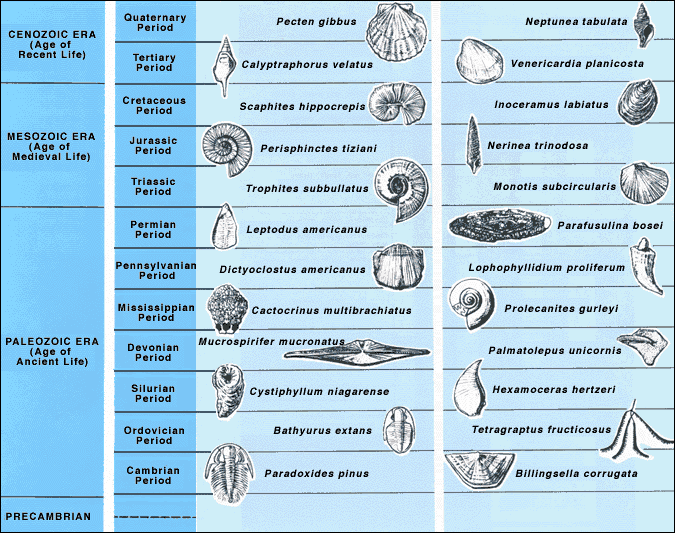Before analyzing the fossil record, the Geologic Eras must first be understood.
Archean Era (3.5-2.5 billion years before people - ybp)
- prokaryotic cells evolved first
- anerobic respiration developed
- photosynthetic bacteria evolved
Proterozoic (2.5 billion - 550 million ybp)
- Eukaryotes evolved
- Oxygen from photosynthesis accumulated in the atmosphere
- aerobic respiration evolved
Paleozoic (550 million - 240 million ybp)
- all major animal phyla evolved
- trilobites dominant life form
- radiation of insects and amphibians across the globe
- mass extinctions due to climate change
Mesozoic (240 million - 65 million ybp)
- Dinosaurs dominant life form
- angiosperms arose and radiated across the globe
- mass extinction wiped out the dinosaurs (cause is debatable)
- mammals arose to fill the niche left by the dinosaurs
Cenozoic (65 million years ago - present)
- mammals radiate into vacant habitats
- evolution of humans
- possible future mass extinction
The farther back in time we travel, the harder it is to find complete fossils. However, enough scientists are tasked with this that thousands of general (non-transitional) fossils have been found (although it could be argued philosophically that ALL fossils are transitional forms of their modern counterparts, which are merely transitional forms of their future species)
Below is a table depicting the variety of mollusk fossils that have been found labeled with their appropriate time period, supported by carbon dating and other dating methods.

No comments:
Post a Comment